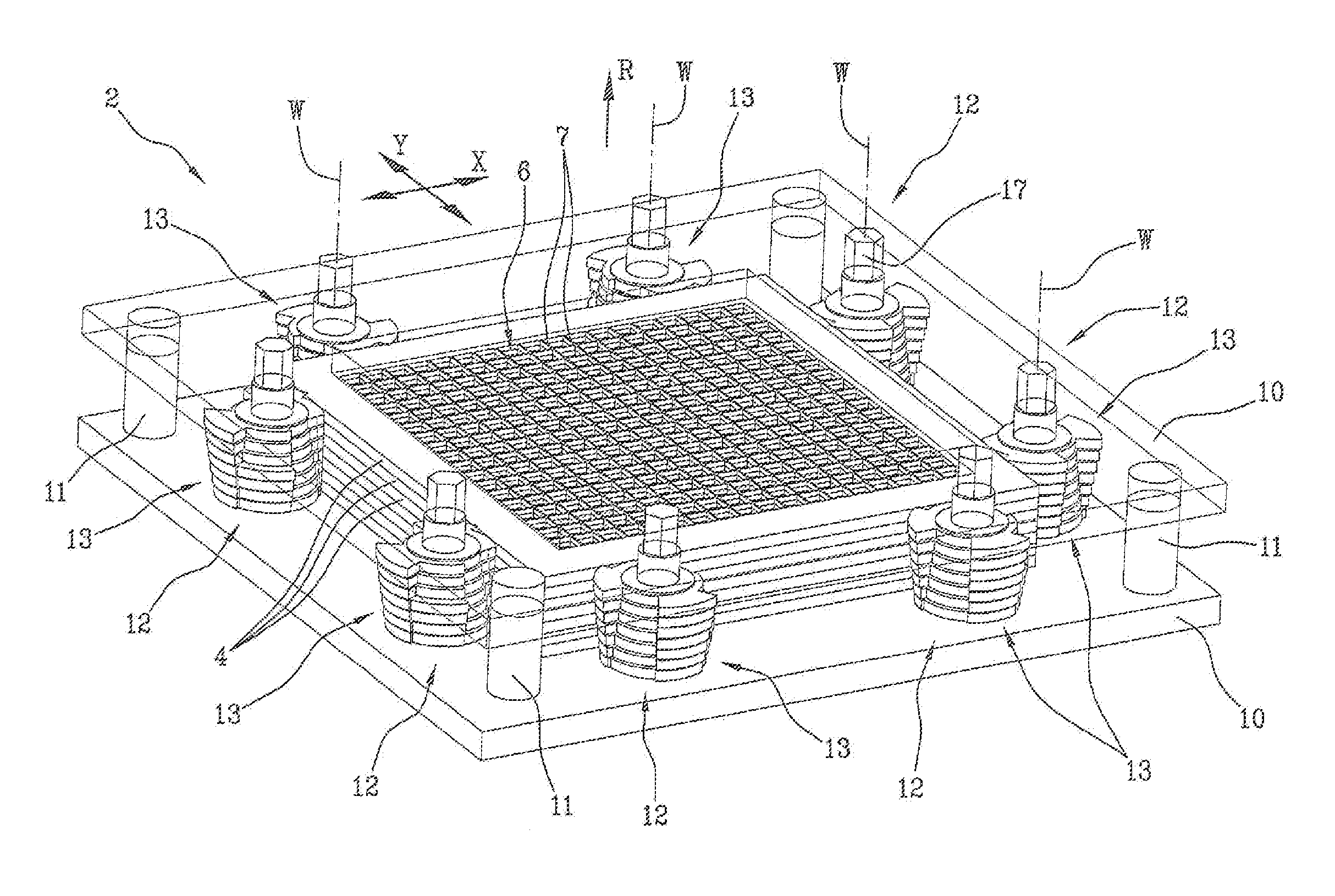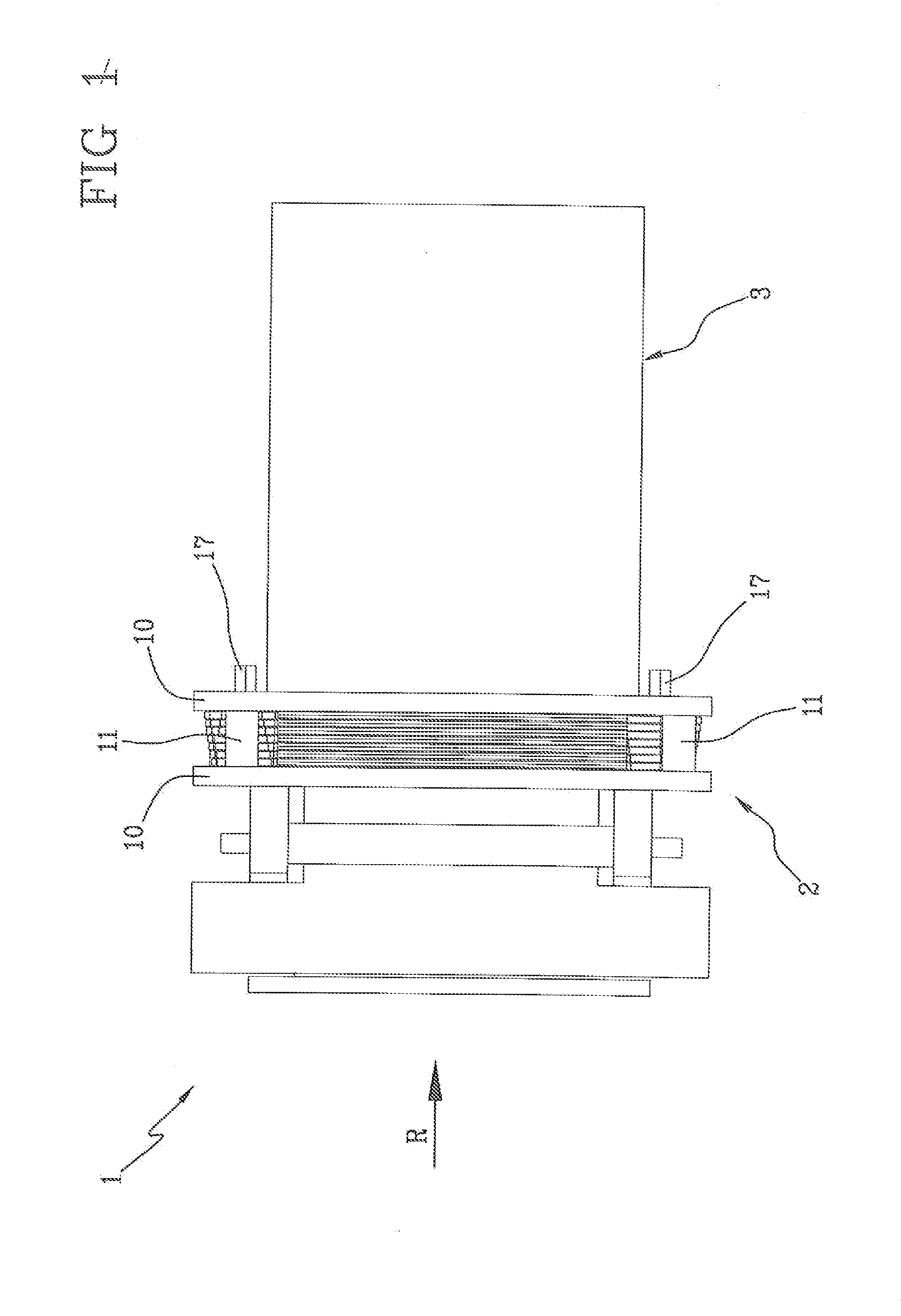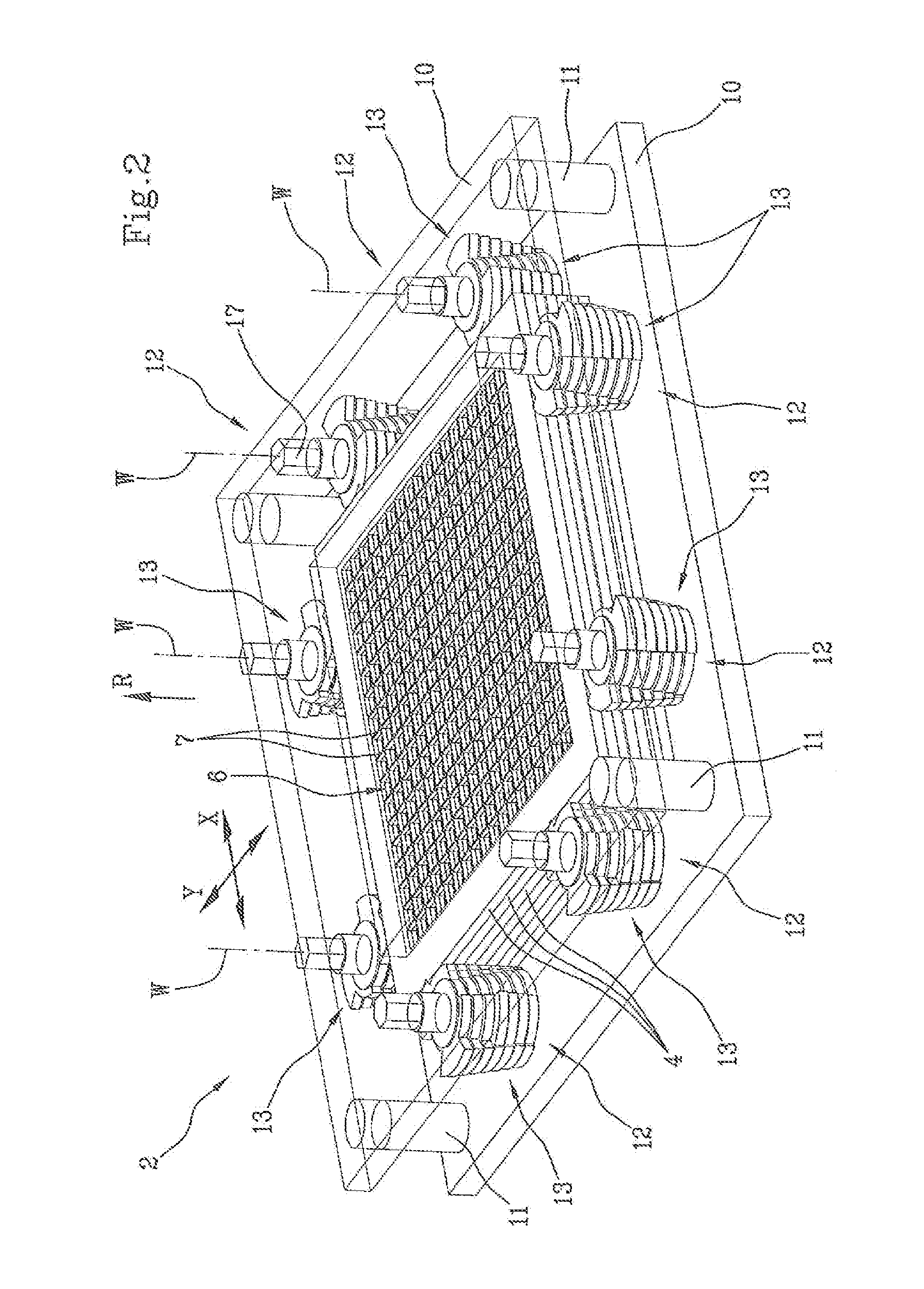Scintigraphic device with high spatial resolution
a high-spatial resolution, scantigraphic technology, applied in the direction of instruments, radiation intensity measurement, material analysis, etc., can solve the problems of reducing the total flow of radiation, unsuitable for application, and lowering the overall detection efficiency, so as to achieve high spatial resolution and high acquisition efficiency. , the effect of high spatial resolution
- Summary
- Abstract
- Description
- Claims
- Application Information
AI Technical Summary
Benefits of technology
Problems solved by technology
Method used
Image
Examples
embodiment
[0100]A preferred embodiment of the scintigraphic device according to the present invention is described below, with particular reference to the geometry and to the measurements of the device.
[0101]According to the embodiment in question, a matrix of 18×18 CsI (Tl) scintillation crystals is used, in which each crystal has dimensions of 2.05×2.05×5 mm3 (2.05×2.05 are the dimensions of the aforementioned receiving surface of the individual crystal, i.e. the surface oriented towards the collimator 2 and towards the ionising radiation).
[0102]The scintillation crystals are coated with a layer of 0.1 millimetres of epoxy resins on the four lateral faces and with a layer of about 1 mm of epoxy resin on the receiving surface. Said coated crystals are integrated in a metallic structure made of tungsten having separating baffles with thickness of 0.2 mm.
[0103]With reference to the collimator 2, seven shielding elements 4 (or grids) are provided, mutually superposed and packed by means of the ...
PUM
 Login to View More
Login to View More Abstract
Description
Claims
Application Information
 Login to View More
Login to View More - R&D
- Intellectual Property
- Life Sciences
- Materials
- Tech Scout
- Unparalleled Data Quality
- Higher Quality Content
- 60% Fewer Hallucinations
Browse by: Latest US Patents, China's latest patents, Technical Efficacy Thesaurus, Application Domain, Technology Topic, Popular Technical Reports.
© 2025 PatSnap. All rights reserved.Legal|Privacy policy|Modern Slavery Act Transparency Statement|Sitemap|About US| Contact US: help@patsnap.com



